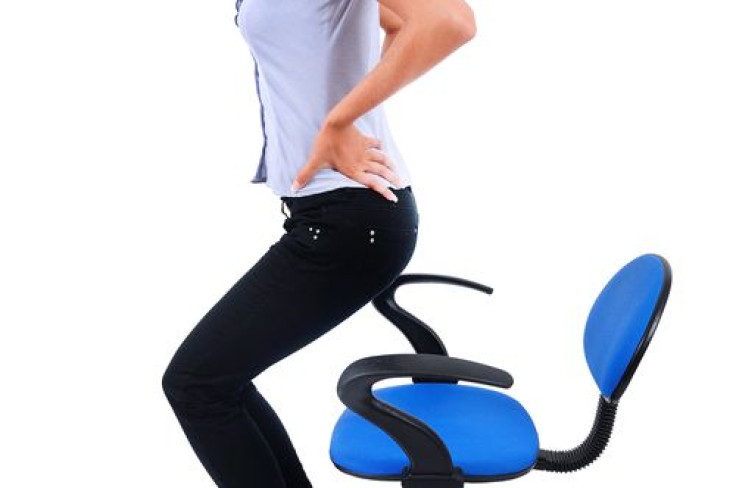Sitting Too Much Expands Your Butt, Creates Larger Backside: Can Cellular Expansion Lead To Obesity?

Sitting is not good for our health, and most of us know that. The modern lifestyle of laptops, tablets, and flat screen TVs has made it inevitable to be under the long spells of sitting down. Now a study published in the Biophysical Journal has found sitting too much not only expands your buttocks, creating a larger and rounder backside, but it can also promote obesity due to cellular expansion — the faster growth of fat mass that pushes and deforms nearby cells to produce more fat.
With more than one-third of U.S. adults and one in three kids considered overweight or obese, according to the Centers for Disease Control and Prevention, the obesity epidemic may be more than just what we eat, but rather how much we sit. “It certainly is a new concept,” said Amit Gefen, professor at Tel Aviv University's Department of Biomedical Engineering, the National Post reported. “Usually when people think of obesity they think of calories, and food, but it is so much more than that.” Gefen and his colleagues sought to investigate whether sitting really does contribute to obesity, besides facilitating the time to eat more unhealthy foods.
Prior to the study, Gefen was studying patients with spinal cord injuries, who were constantly in a seated position. His previous research led to him find static seating allows fat cells to grow and the muscle cells to disappear. Gefen decided to apply the same concept to people without spinal cord injuries. The team of researchers used state-of-the-art microscopy technologies to analyze the buildup of fat in the body at the cellular level.
The findings revealed nutrition was not the only factor driving obesity; cellular expansion was found to play an equally important role in fat production. Sitting down for long periods of time led to an accelerated expansion of fat cells in the buttocks because they were exposed to “sustained, chronic pressure.” This resulted in a change of the cell’s structure and mechanics once the lipid droplets accumulated in the backside region.
"Contrary to muscle and bone tissue, which get mechanically weaker with disuse, fat depots in fat cells expanded when they experienced sustained loading by as much as 50%. This was a substantial discovery,” said Gefen in the press release. In other words, the researchers’ findings affirmed that our buttocks expand and stiffen once fat tissues start to grow in the region, unlike muscle and bone tissue that withers away when not persistently used. As a result, the stiffness changes the environment of the surrounding cells as they begin to mature and become more like “steel bowls,” rather than cushions. This leads to the appearance of a larger and rounder backside physique.
To offset the effects of sitting, the researchers recommend for us to be as active as we can, despite the demands of our modern lifestyles. “If you can, do what I do, try and go to the gym at least three times a week, walk, and get out of that chair whenever you can,” Gefen said. This advice helps us become more conscious of taking proactive step in interrupting prolonged sedentary time.
A similar study published in the American Journal of Preventive Medicine found a sedentary lifestyle can set back our physique and make it more difficult to make up for it later in life. Those who are deskbound throughout the day but still workout are found to be less protected from the negative effects of being sedentary, the researchers believe. Nutritional scientist Rebecca Seguin and her colleagues believe the key is to avoid long spells of sitting as much as possible. “If you’re in an office, get up and move around frequently,” said Seguin in a press release. “If you’re retired and have more idle time, find ways to move around inside and outside the house.”
The findings of both studies highlight that obesity is not just due to nutrition, but also a result of cellular expansion caused by sedentary activities, such as office work. This could be the first step in finding new ways to treat people with weight problems. In the meantime, it’s time to stand up for our health to keep our bodies moving despite the demands of a modern lifestyle forcing us to sit still.
Sources: Benayahu D, Gefen A, Girshovitz P, et al. Adipocyte Stiffness Increases with Accumulation of Lipid Droplets. Biophysical Journal. 2014.
Allison M, Buchner DM, LaCroix AZ et al. Sedentary Behavior and Mortality in Older Women: The Women’s Health Initiative. American Journal of Preventive Medicine. 2014.



























